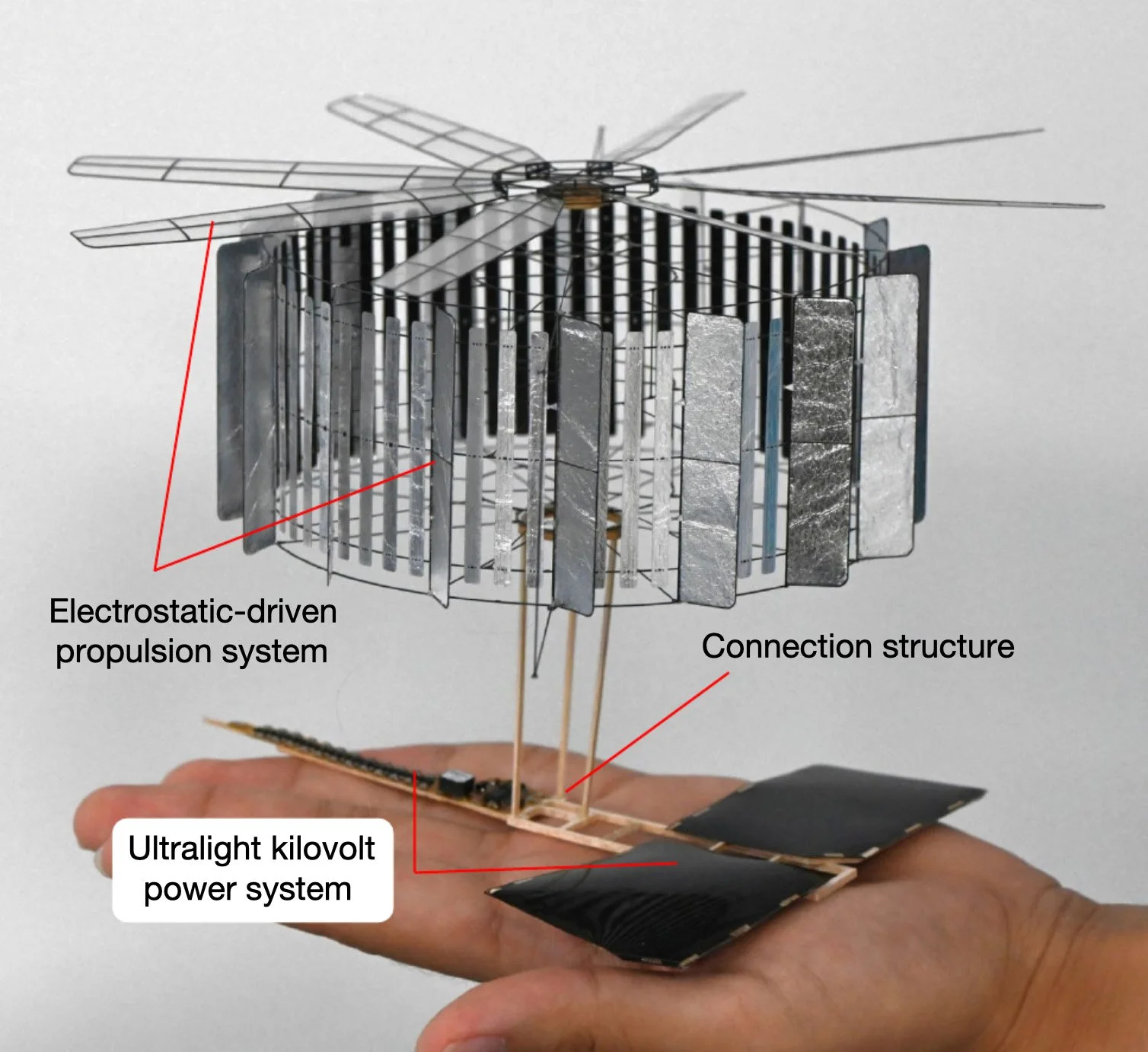Chinese Researchers Develop Feather-Light Drone with Near-Infinite Flight Potential
Image Source: https://www.nature.com/articles/s41586-024-07609-4.epdf
Chinese researchers have achieved an advancement in drone technology with the development of an ultra-lightweight drone weighing just over four grams. Documented in a recent Nature paper, this drone represents a significant leap in the capabilities of micro aerial vehicles (MAVs). With a unique design leveraging solar power and electrostatic propulsion, this innovation may revolutionize the way we think about drone endurance and efficiency.
Light as a Feather
Weighing less than a sheet of paper, the new drone’s design is nothing short of revolutionary. It employs an electrostatic motor that itself weighs just 1.52 grams, paired with solar cells that generate 4.5V of power. This combination allows the drone to achieve a lift-to-power efficiency that is two to three times greater than traditional drones, making it a major breakthrough in the field of ultralight MAVs.
The Key to Endless Flight
One of the most exciting aspects of this drone is its potential for near-infinite flight duration, thanks to its reliance on solar power. The researchers believe that with the addition of rechargeable batteries, the drone could theoretically maintain flight for up to 24 hours. This would mark a significant improvement over current MAVs, which typically have a flight endurance of less than 10 minutes due to their limited payload capacity and low lift-to-power efficiency.
Overcoming Traditional Limitations
Traditional MAVs have struggled with short flight times and inefficient propulsion systems, primarily due to their limited payload capacities. The new drone addresses these issues head-on with its high lift-to-power efficiency of 30.7 g/W and a remarkably low power consumption of 0.568 W. These innovations allow the CoulombFly drone to achieve sustained flight powered entirely by natural sunlight, a feat that has previously eluded researchers.
The Science Behind the Drone
The CoulombFly utilizes an electrostatic propulsion system that significantly enhances its efficiency. This system, combined with its lightweight kilovolt power supply, represents a departure from traditional drone technologies. The drone’s ability to harness sunlight effectively for power, while maintaining a minimal weight, showcases the potential for future developments in MAV technology.
The Implications for MAV Technology
This new development opens up exciting possibilities for the future of MAV technology. The ability to achieve prolonged flight times and improve efficiency could lead to broader applications of these tiny, agile drones. Potential uses range from environmental monitoring to long-duration aerial surveys, where extended flight capabilities are essential.
Scaling and Practical Application
While the CoulombFly represents a significant technological advance, there are still challenges to address before it can be widely adopted. Issues such as scaling the technology for practical use and ensuring the durability of solar power systems in various conditions will need to be resolved. Continued research and development will be crucial in overcoming these hurdles.

